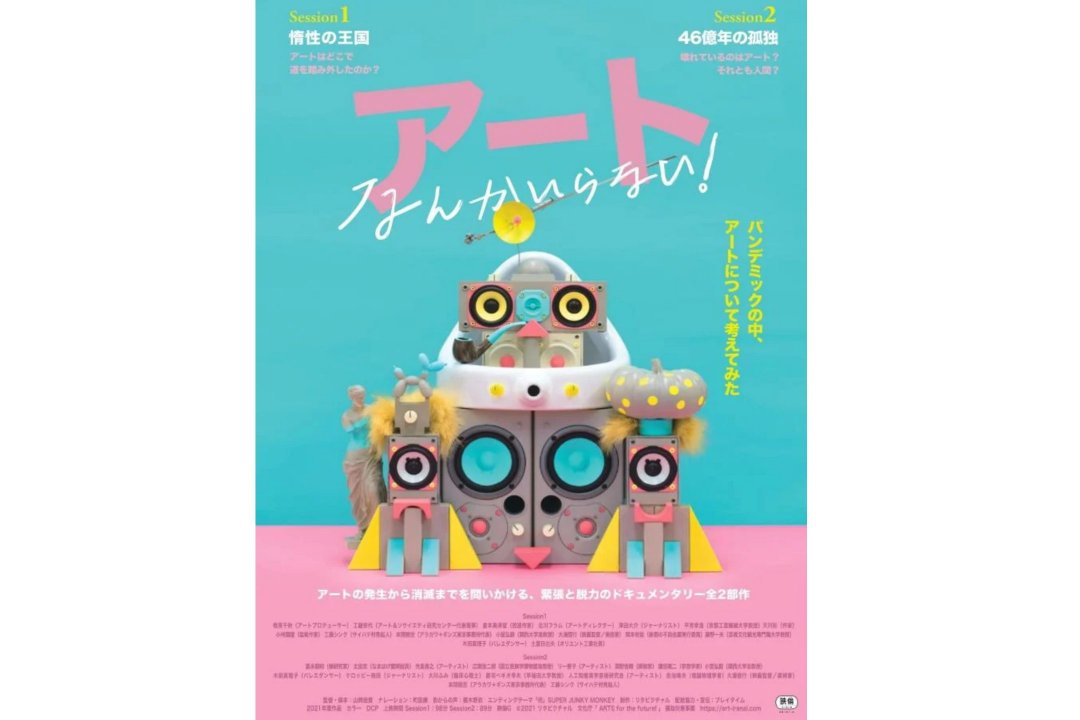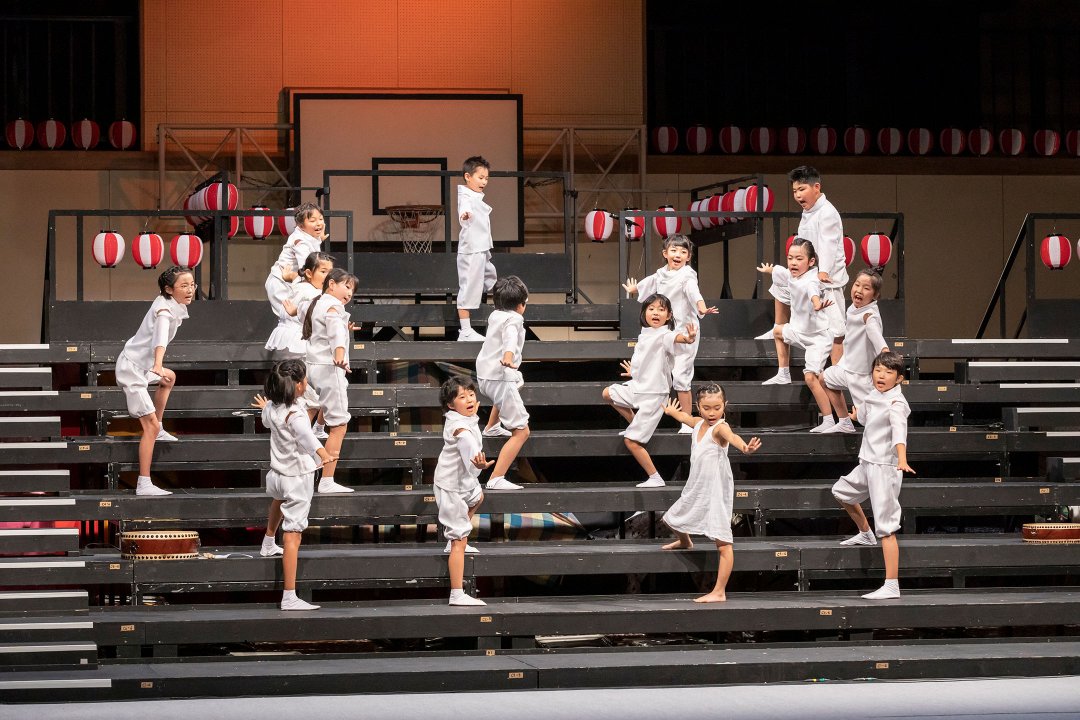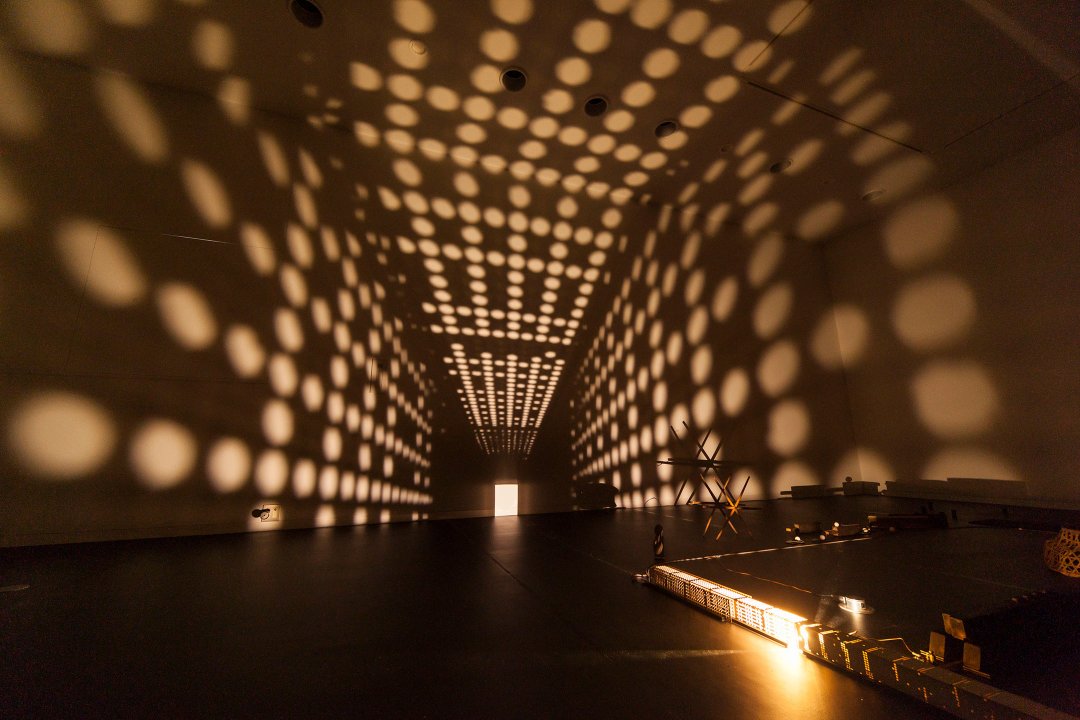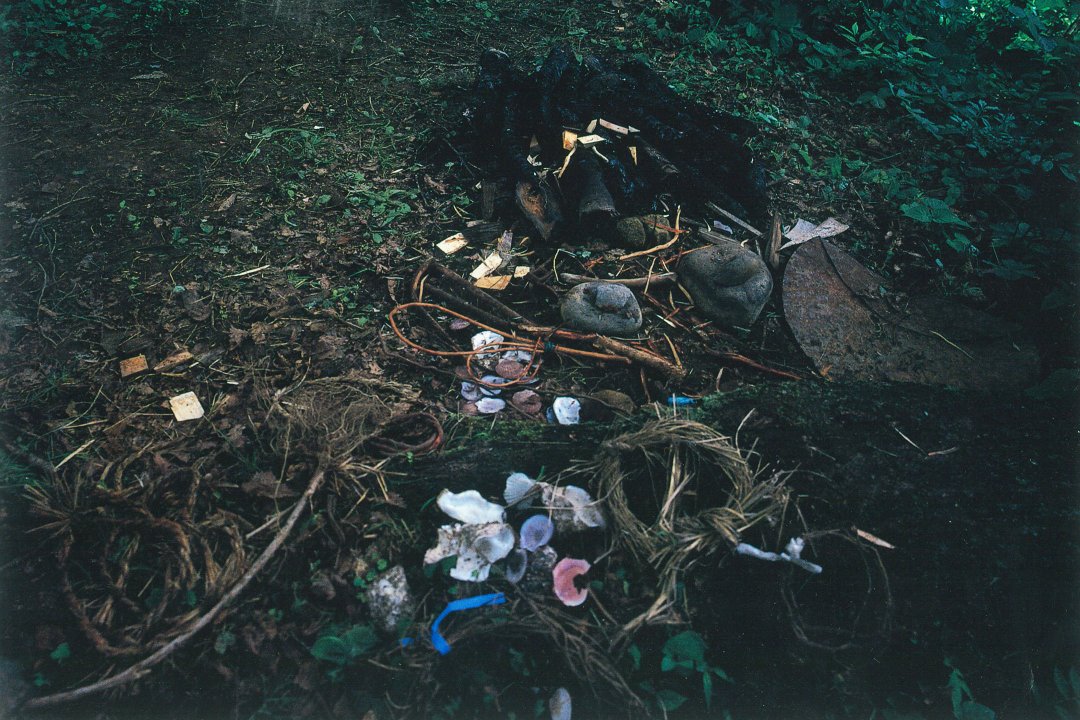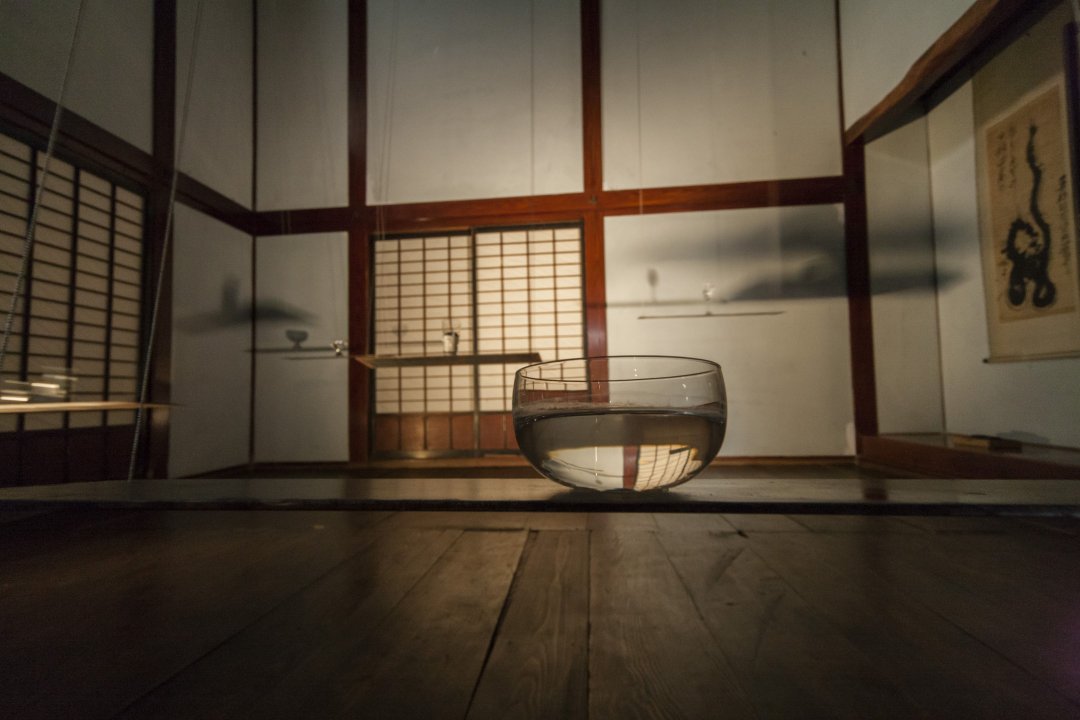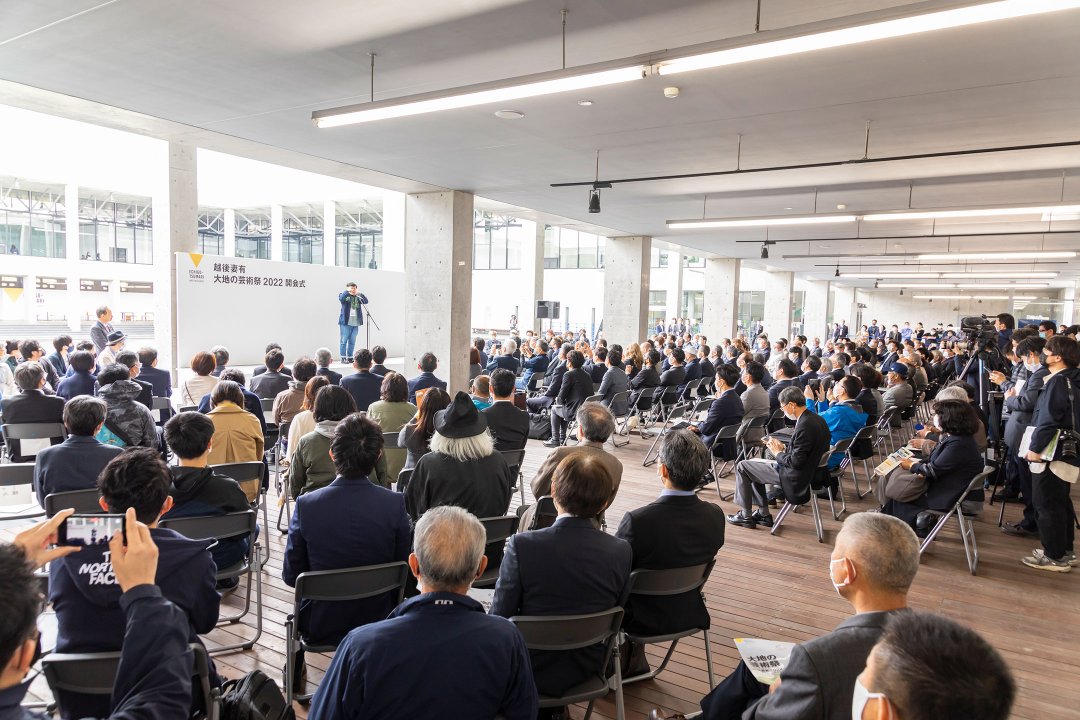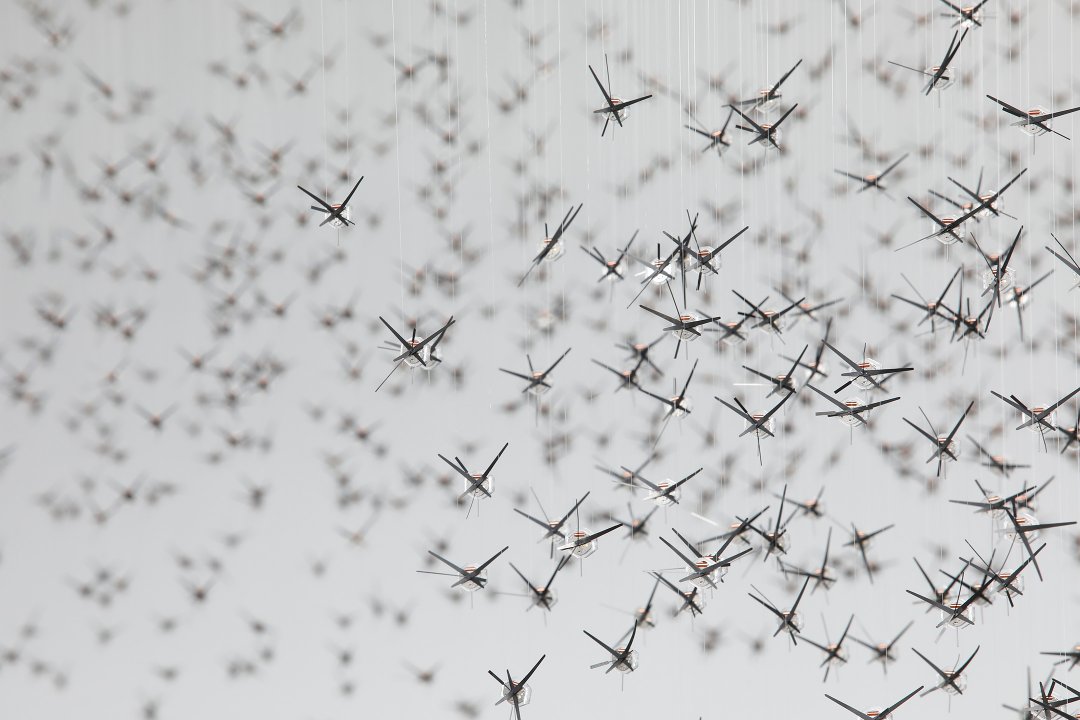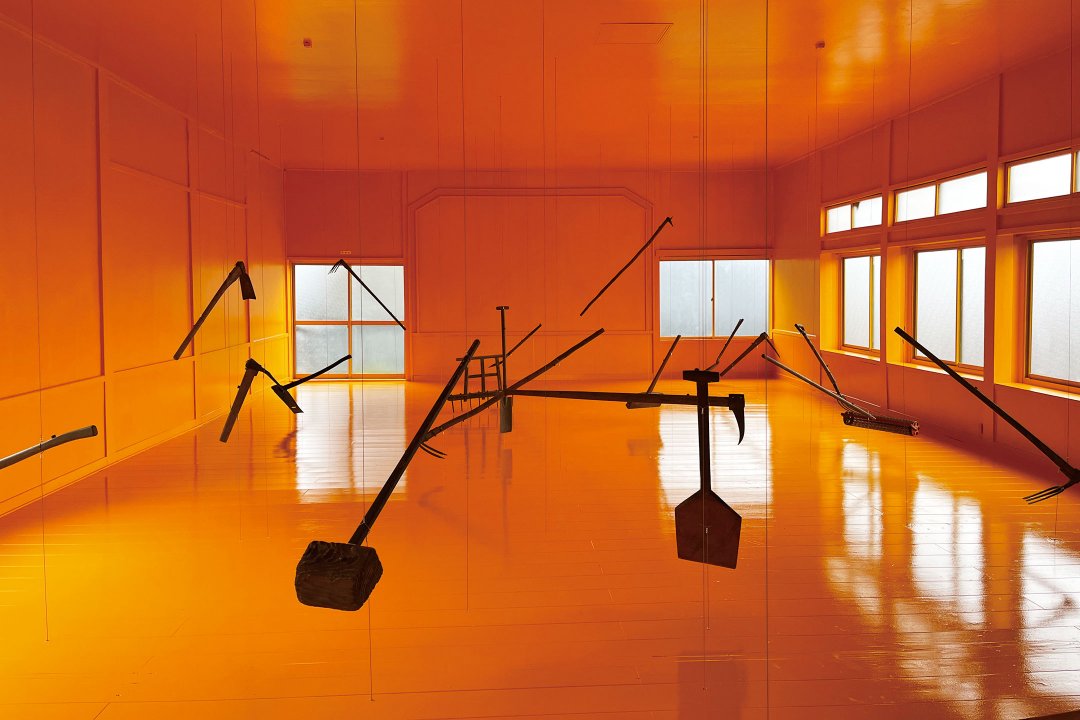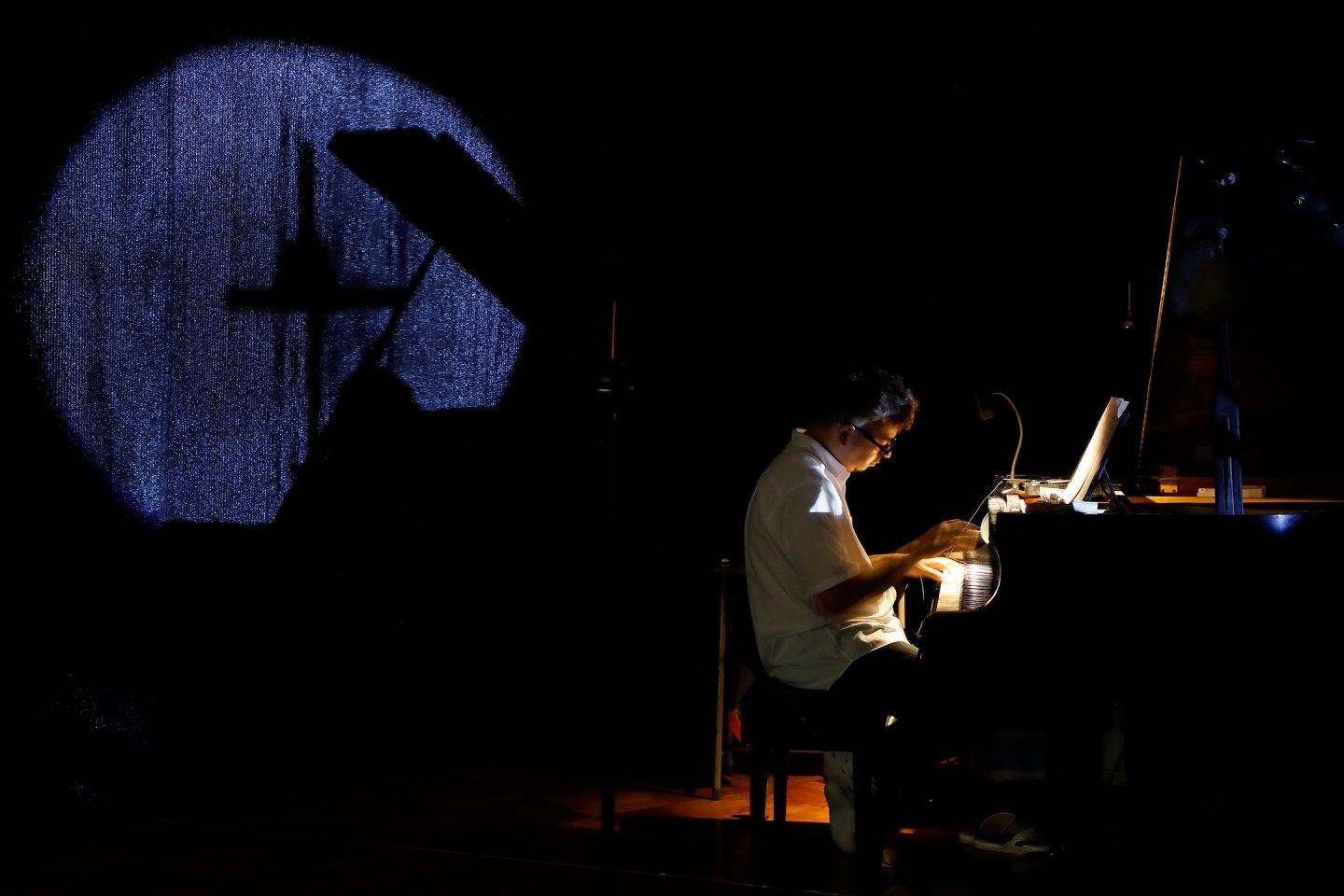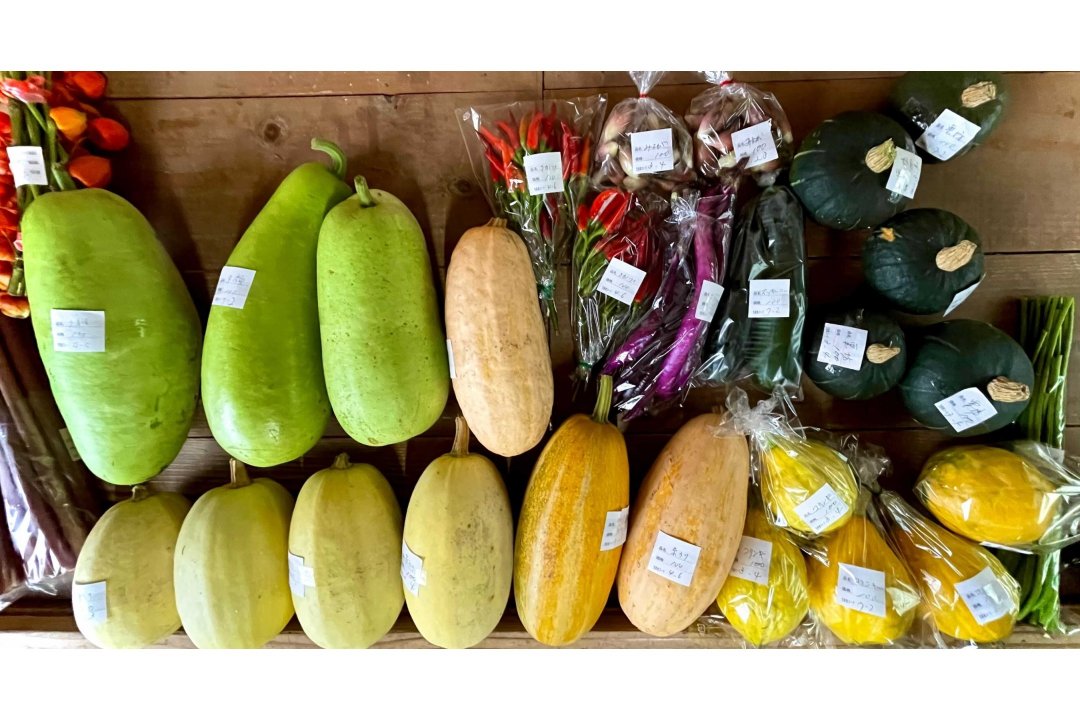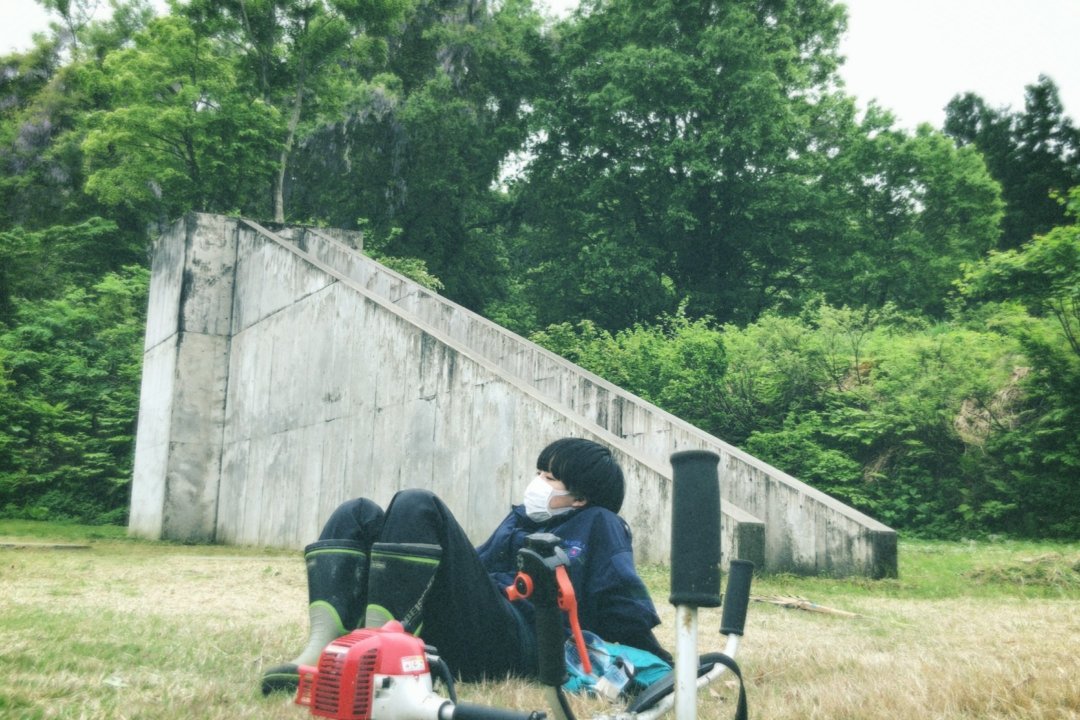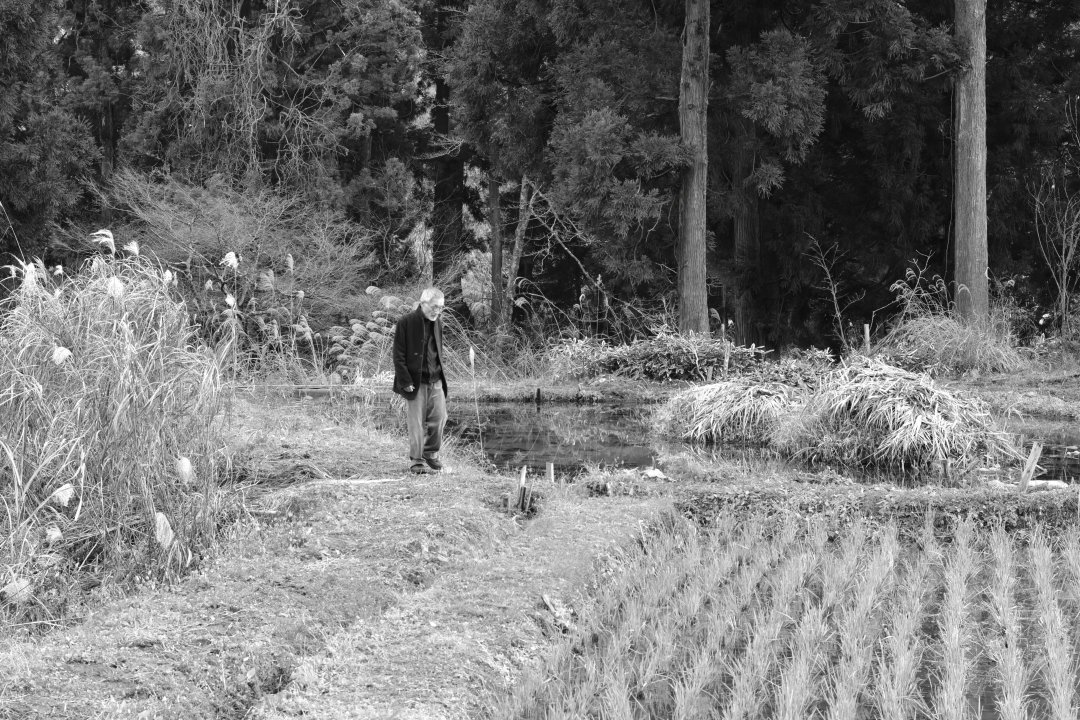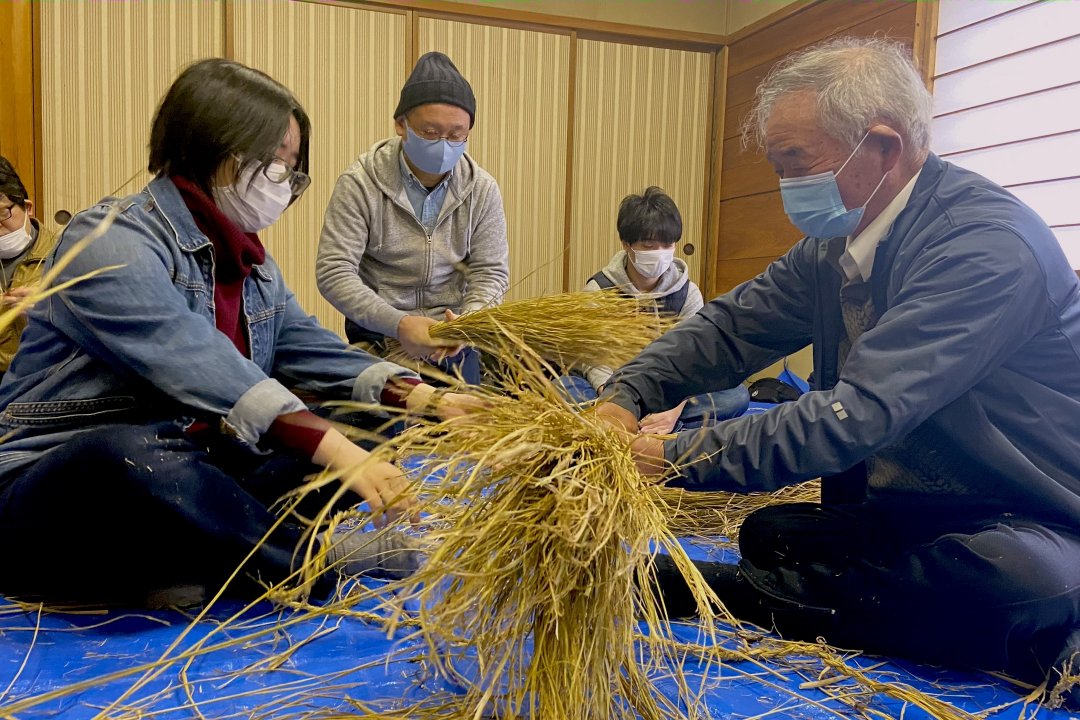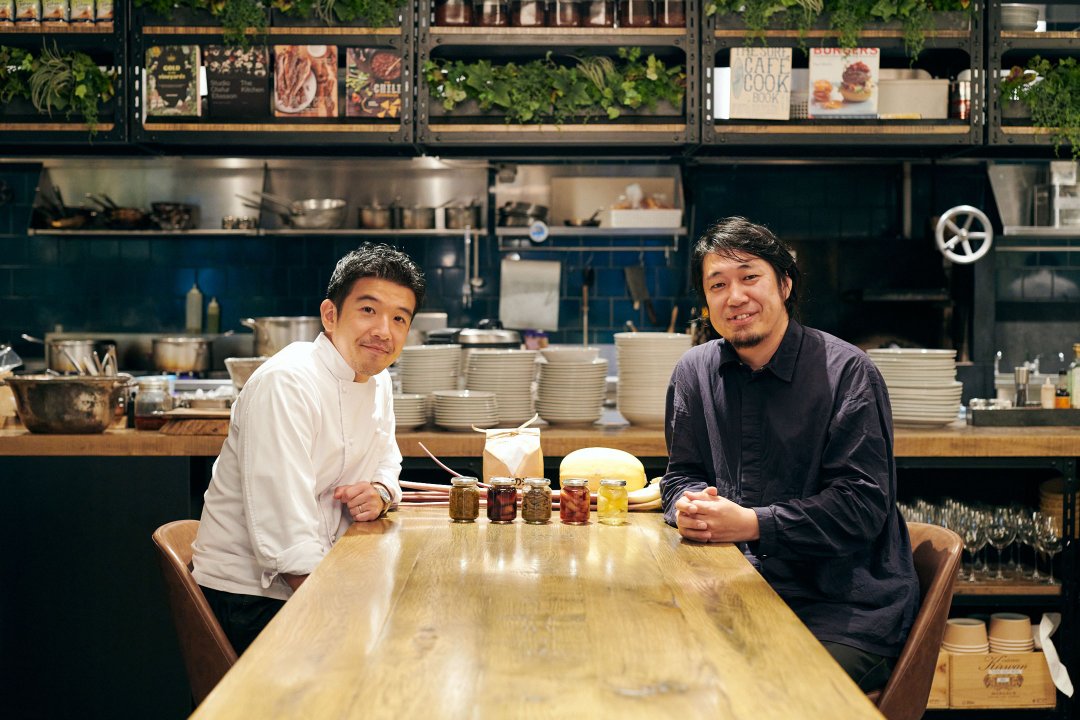Thinking 21st century art in the world from Niigata
Echigo-Tsumari Art Field - Official Web Magazine
Feature / Update from Kohebi - vol.1
Reconsidering the art festival in post pandemic: Briefing on "rebooting" Kohabi-tai
Fram Kitagawa ("Art from the Land" editor-in-chef / ETAT General Director)
Although the state of emergency has been lifted, the spread of the new corona virus is yet to come to an end. While some of the art festivals across Japan have been either postponed or cancelled, KITAGAWA Fram, General Director of ETAT hosted the briefing session of rebooting Kohebi-tai in preparation for ETAT2021
Text and edit by UCHIDA Shinichi / Translated by MIWA Worrall
27 July 2020
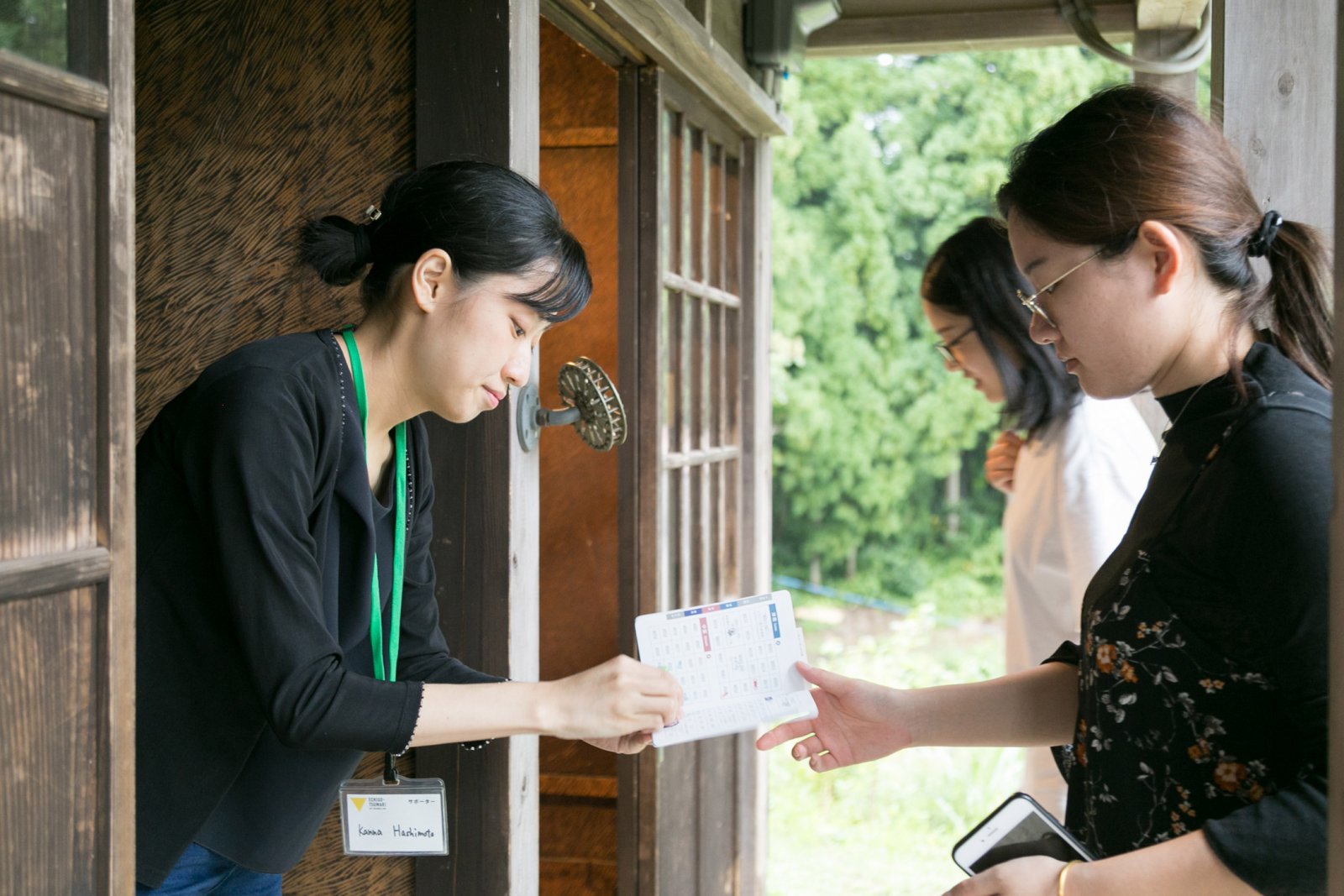
What is "Kohebi-tai" in the first place?

The seating was arranged in consideration of social distancing at the main venue in Tokyo (Art Front Gallery, Daikanyama) while connecting with participants from another venue in Tokamachi-city as well as those joined on-line. Approximately 100 people participated in total. (Photo courtesy of ETAT Project Office)
The Briefing on “rebooting” Kohabi-tai was held on 15 July 2020 at Art Front Gallery (in charge of planning and operating ETAT) in Tokyo while connecting with another venue in Tokamachi-city as well as welcoming people participating via on-line.
Kohebi-tai is a name given to supporters which established in 2000 as the first ETAT took place. As volunteers, they have been helpful and engaged with diverse range of activities including maintenance and production of artworks, attending visitors in addition to clearing snow in winter, farming and helping other chores in the local communities. The number of people, young and old, who have participated as Kohebi exceeds 3000 inclulding those from around the Kanto area in Japan as well as people from abroad.
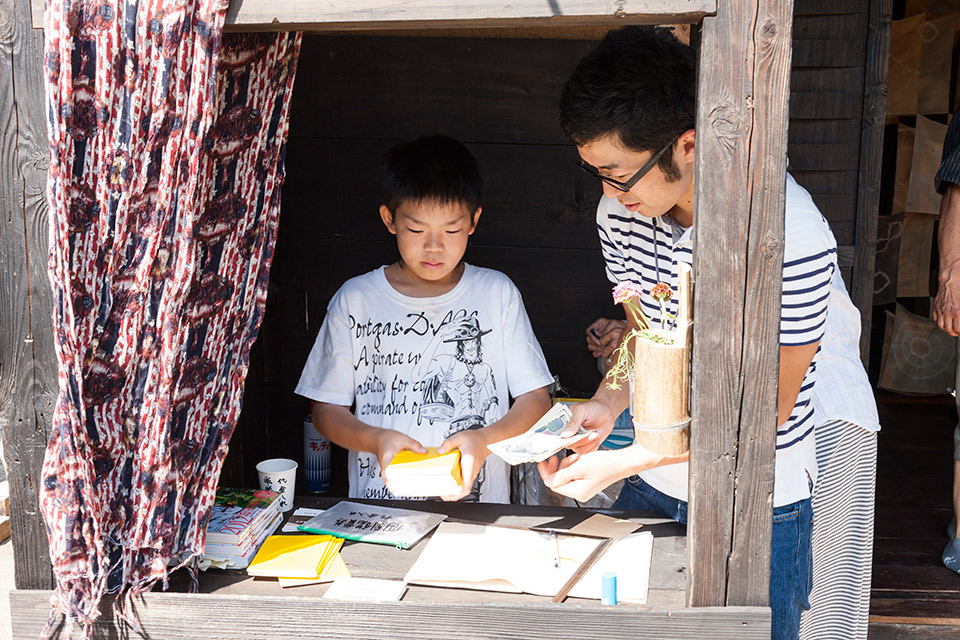
Photo by NAKAMURA Osamu
Kitagawa described Kohebi-tai as “a very unique movement in the global landscape” and expressed his gratitude. Although the Kohebi-tai has been expanding in the last twenty years, he mentioned that there is a challenge of passing on the best element of ETAT and its supporting unit, Kohebi-tai, to future.
Kitagawa:What both ETAT and Kohebi-tai are built upon is a desire to do something to the community of Echigo-Tsumari and old people in the region. How we can continue to consider this initial desire is a challenge that will lead to reconsider future. In addition, we have been affected by the pandemic caused by new corona virus. The number of visitors from abroad in particular will be dropped significantly which encourages us to consider various aspects of the festival from zero-base.
This briefing session began with an aspiration for transforming difficulties into the driving force for moving forward.
"The Rice Field" (2000) by Ilya and Emilia Kabakov (Photo by NAKAMURA Osamu)
Checking the starting point - guiding principle of the ETAT under the pandemic
The session was follwed by a lecture titled “ETAT – Guiding principle of the art festival under the pandemic”.
Kitagawa:As this lecture is relevant to an art festival in general, I have decided to make this information session open and deliver it on-line as well. Lots of art festivals have already been postponed or cancelled to date. As for what we have been involved, “Ichihara Art x Mix 2020”, “Northern Alps Art Festival”, and “Oku-Noto Triennale 2020” have all decided to put off their respective festivals.
Considering the relation between nature and human has been at the core of “ETAT” since its inauguration as its overarching aganda, “human beings are part of nature” explains. In this respect, the current new corona virus is not a new topic. The virus has been changing the world and it may continue to do so. We are here to reconsider something fundamentaly universal.
Some of the slides shown during the presentation revisited the starting point of ETAT including challenges such as depopulation and ageing, decline of satoyama, breakdown of community, that had lead to the launch of the festival. “The ten ideas of ETAT”, which were born through as the series of the festival were delivered, were also introduced. (They can be found in the “Bijutsu ha Chiiki wo hiraku: 10 ideas of ETAT” published in 2013). As the word “ideas” implies, they are not just rhetorical flourishes. Rather, they include keywords that we should continue to consider.
〈Ten ideas of ETAT〉
1. Exploring Satoyama as you follow artworks as guiding lights.
2. Making something on someone’s piece of land
3. Human beings are part of nature
4. Art discovers the region
5. Making use of existing things to create an alternative value
6. Collaboration beyond the regions, generations and backgrounds
7. Transforming public projects into artworks
8. Unique hub facilities
9. Life as art
10. Global / Local
Artists who created artworks in Echigo-Tsumari have made us realise various things in the current circumastance. Ilya and Emilia Kabakov, the artist couple who created one of the iconic works of ETAT, “The Rice Field” is one of them. They never gave up expressing themselves through creating artworks when it was difficult to do so as contemporary artists under the totaliarian government of former Soviet Union. While it is different from lock-down caused by the pandemic, the fact that they continued to put together ideas under the various restrictions and eventually brought them to the prosperity do give us courage. Their work, referencing the blessing and rigour of nature through rice production and highlighting the relation to environment, deeply resonates with the festival agenda.
Kohebi-tai has helped harvesting rice in this rice field every autumn in addition to on-going maintenance of other works.
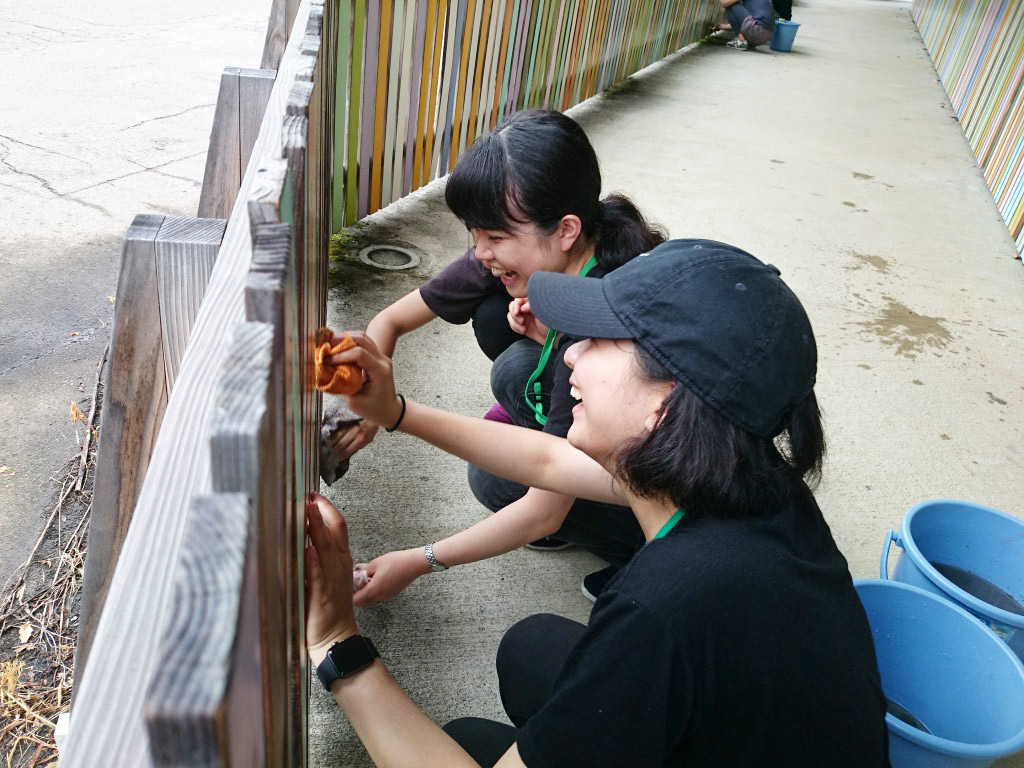
"The School of Akakura" by Navin Rawanchaikul+Navin Production, 2015 (Photo by ISHIZUKA Gentaro)
The artist visited one of the villages experiencing ageing of the population in the region, connected and learnt about the history and memory of the community from the old people and completed the large-scale painting. Kohebi-tai members welcome visitors to artworks dotted across the region including this one.
Building community through art - what is the role of art?
ETAT has been groping and steadily developing in the last 20 years. 332 artists from 44 countries participated in the last ETAT in 2018, presenting 379 artworks (including 210 permanent artworks from previous festivals) in 102 villages and welcomed 548,380 visitors.
Kitagawa: Echigo-Tsumari may now be the best place where people can see most number of artists of the 21st century in the world. On the other hand, the world is facing various issues including climate change, refugees and migrants, continuation of colonial system, the limits of capitalism, and increasing in inequality and poverty. While some of these may seem to have been around since the Age of Discovery in 500 years ago, the current pandemic seems to have brought all of these issues to the front and this is where we have to start thinking about these problems.
Kitagawa checked the seriousness of these issues by referring to some data and analysis. The data used in the presentation showed that these issues were not unrelated to us such as “one in seven children is in poverty in Japan”. Art festival doesn’t solve these social issues directly. However, it can be a starting point for people to proactively consider what can be done and take small steps for actions.
Kitagawa: The starting point of ETAT was to discover this region’s originality. It has created opportunities for exchange, learning and collaborations which then has lead to bringing visitors to the region. Since the artworks belong to the entire space of their respective surrondings, we have made travels to get to see the artworks as part of experience. In local communities facing real problems, several attempts have been made to consider the relationship between nature (civilisation) and humans, while involving governments and artists through their works.
The festival has been a medium for connecting diverse elements. Performances, workshops, highlighting culinary cultures and guided tours in addition to supports and exchanges with Kohebi-tai are part of what the festival has brought.
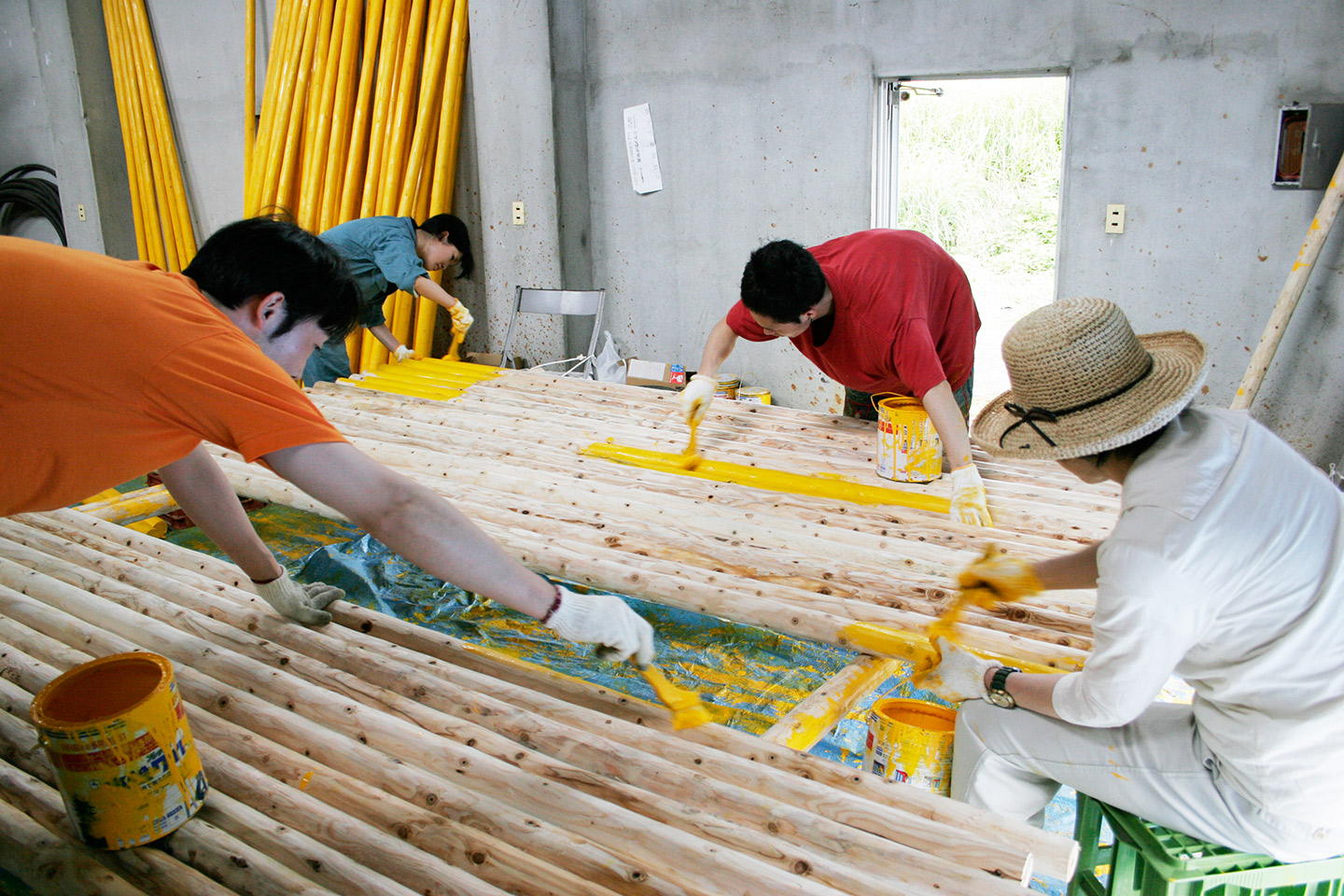
A workshop to create an artwork with ISOBE Yukihisa.
What has born out of these activities includes site-specitic artworks as well as exchanges and collaborations amongst different groups of people within and outside the region. As we face post-pandemic challenges, Kitagawa describes these assets of ETAT as the initial enthusiasm, “that is something to return to when we lose the future direction.
Moreover, he has always tried to “go up to the ring (dohyo) with opposit party” as he has worked together with the public bodies and local communities. It was important to do so rather than proceeding forward only with people who agreed with the festival from the begining. This perspective has also lead to the following keywords “diversity: global/local”. Diversity here is represented not only by artworks but also by Kohebi-tai which attracts people from different regions with diverse cultural backgrounds and ages.
Once again with Kohebi-tai

Kohebi-tai working with TAKAHASHI Kyota, the artist to create artwork for the Snow Fireworks called “Gift for Frozen Village”.
While the event was called “Briefing on “rebooting” Kohabi-tai”, the talk focused on the overall framework of the festival. It showed how Kohebi-tai had become an integrated part of the festival and thus “rebooting” Kohebi-tai would prompt the re-launching of the festival itself.
Kitagawa: When the first festival was held in 2000, Kohebi-tai played a significant role when we didn’t have enough visitors, artworks, nor those who could go in-between people. It was because there was a sense that the art festival was run as “our school / a place to learn from each other”. It has transformed into “Koebi-tai” of the Setouchi Triennale and “Nanohana Players” of the Ichihara Art Mix. However, we are currently facing a difficult situation in which the fundamental human desire to meet and speak with others face to face is not fully met due to the pandemic. How to think from such situation is now in question.
We have been exploring different ideas. For example, during the lockdown of the COVID-19, five festivals including ETAT have opened a new Instagram account in June called “Artists’ Breath“. It is a platform to share various “artists’ breath” through two-minutes movie clips by artists who were supposed to participate in those festivals that have been postponed.
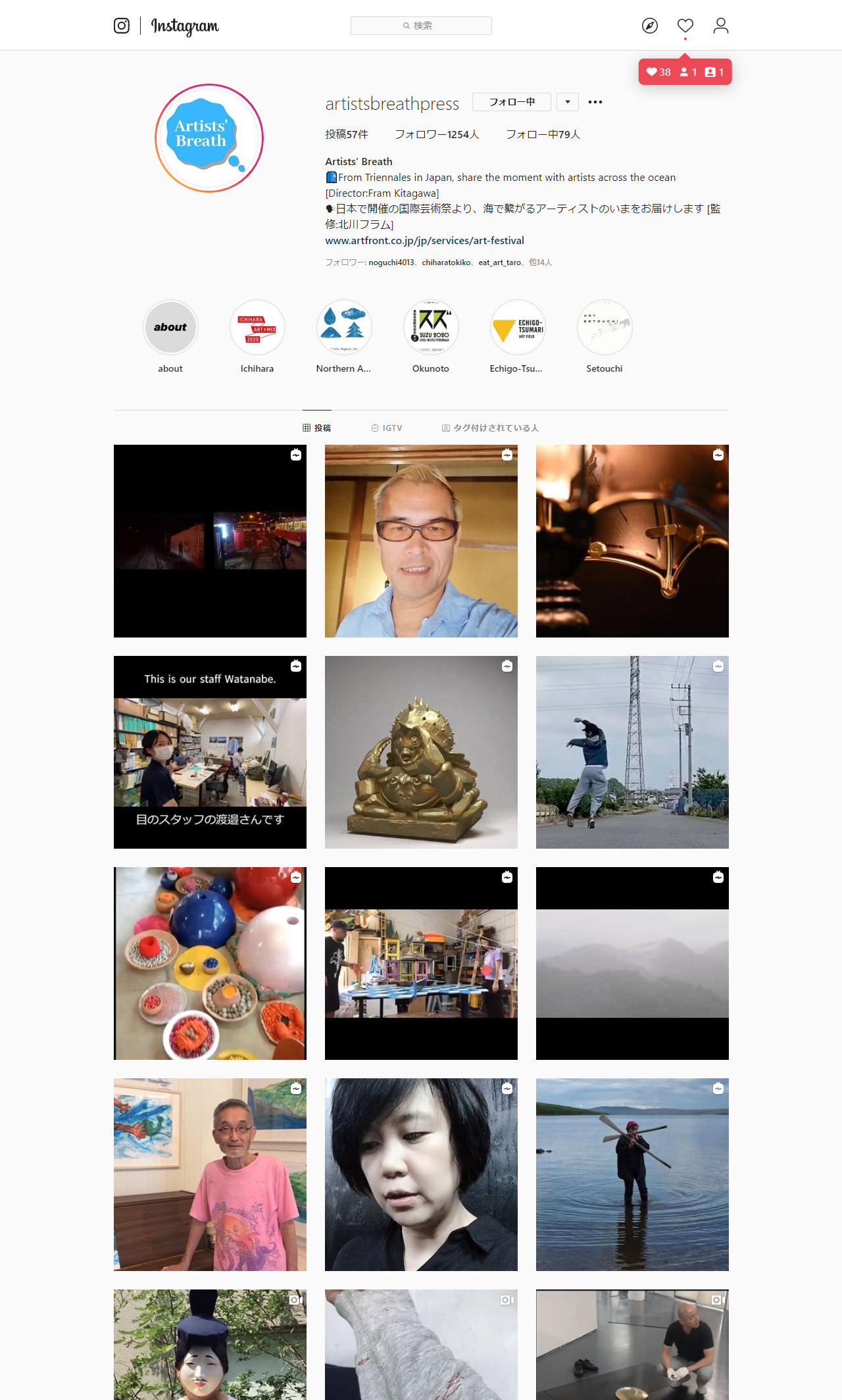
“Artists’ Breath”. A collaborative initiative of the five international art festivals in Japan to share “breath” of artists connected through ocean, beyond borders of regions and countries.
“What makes art interesting is that art doesn’t single out the person in the center as the best. Art rather affirms the fact that everyone, say, seven billion people in the world, is different”. Kitagawa referred to this perspective again as he has received messages (breath) from “artists connected over the ocean” no matter how far they are.
In addition, Kitagawa also spoke about plans for ETAT2021 including making a new outdoor area around Matsudai Nohbutai as well as the renovation of one of the hub facilities, Echigo-Tsumari Satoyama Museum of Contemporary Art, KINARE and reviewing to replace some of its permanent artworks. Based upon the principle, “art is an experience”, ETAT will consider alternative ways for collaboration that are only possible in this situation we are currently facing and think about what is truely important.
The future of Kohebi-tai is deeply related to its operation. We all have to think together, more than ever, about what should change and what should remain unchanged. Pleaes visit the official website of Kohebi-tai if you are interested. The website not only introduces the activities of Kohebi-tai but also keeps you update on supporting activities that need participants. Registration can also be done through the website. We also welcome those who may become “local supporters” (*1), working closely with Kohebi-tai.

Cleaning of the artwork, “Choma”, by ASAI Yusuke was held on 24 July 2020. Approximately 20 including the artist, local supporters and children participated in the workshop. The workshop included brooming the square where the work was drawn and repainting the work.
≫Click here to find out details of the artwork
In addition, “Kitagawa Fram workshop – making a local art festival” was also introduced. It is a new series of lectures launched by ETAT. In addition to attend lectures, participants will engage with various supporting activities to the festival and search for wisdoms of leading alternative life at the point where region meets city. The main themes of the lecture series are agriculture, food, art and community building/starting a business. Information on and registration with each of the lecture series will be available on the ETAT official website.
Kitagawa: It is a new attempt for ETAT to charge participants a fee and invite them to think together. I hope those attendees will proactively engage with the festival, starting from zero, in collaboration with Kohebi-tai and local supporters.
“Kitagawa Fram workshop – making a local art festival” consists of bi-monthly lectures (at Art Front Gellery) which can be particiapted remotely on-line and activities on site in the region twice a month. After the information briefing, we held the cleaning workshop of the artwork by ASAI Yusuke on 24 July. Stay tuned how the attendees of the workshop will work together with Kohebi-tai in coming months.
*1:Local supporters
The local supporters are locals who provide support with ETAT. Joined force with Kohebi-tai, the local suporters not only help activities with ETAT but also organise workshop to learn about the festival. The local supporters make the best use of their local knowledge and experience includign giving lift to Kohebi members between artworks as well as being a tour guide for visitors.
Visit here for the details of ETAT local supporter’s.
Facebook
From inside and outside of the festival - Q&A
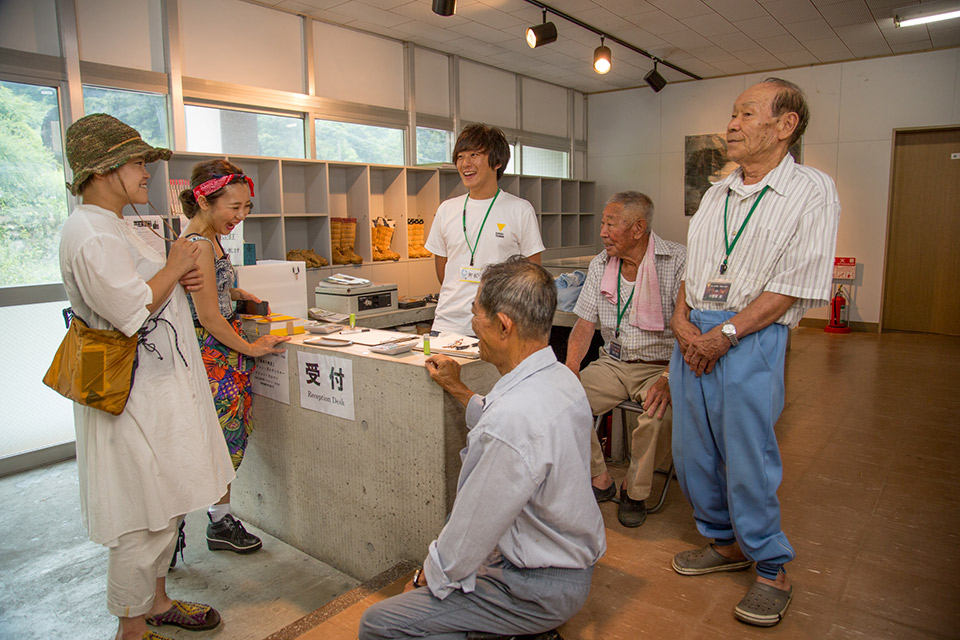
Photo by HATORI Hiroshi
The information briefing was followed by Q&A from the attendees. One of the questions asked by the local supporter connected on-line from the venue in Tokamachi-city went “I understood that the nature of Kohebi-tai was to contribute to the rural revitalisation. Does it mean that everything relating to supporters’ activities will be brought back to what it was in 2000?”
Kitagawa answered as follows by saying “this is slightly sensitive as it is about how much the General Director (myself) should intervene with people supporting the festival.”
Kitagawa:”From my perspective, it is always clear what ETAT tries to achieve”. So I would think if someone is interested in what it is, they should join at first.” In this regard, he expressed that he has actually been deeply chagrined as he has observed that the point of discussion amongst supporters has focused on “how they should be”.
Of course, I would like to welcome their willingness to try something new. However, what has been most important from the very begining was to support the installation and maintainance of artworks and their venues. For example, the reception at an artwork is the front line of the festival. However, it is rare to see people are willing to take up this role. I am hopeful to discuss, including these points, and review together what this art festival actually tries to do.
He also mentioned that “rebooting” including such discussion, was something he has been thinking about regardless of the current pandemic. It is difficult for people coming from outside of the region to visit Echigo-Tsumari. Local people, on the other hand, face other difficulties caused by the ageing of the population. He, therefore, suggested that the first and crucial step is to find “an alternative way for everyone involved to make something that can be done.” Exchanging concrete opinions will be important in order to make it happen.
To the question from a person participated on-line, “if any consideration will be given to people such as student who is willing to participate but finds it difficult to afford”, he answered “(the project office) should be able to organise transport between Tokyo and Echigo-Tsumari. We understand some people are currently experiencing difficulties. We would like to find a way as we receive feedback from those participants. ”
Some suggestions including the following were also made: “ETAT, as a well-established event, could apply for the COVID-related grants and fundings and make the event more accessible for those interested.” “Find out what former Kohebi members are doing now and seek for their advices and suggestions from theier own experiences”.
Kitagawa replied that he would consider these points immidiately. A person in charge at Tokamachi-city council also promised to consider a few suggestions made during the Q&A. He also expressed his enthusiasm to establish a firm connection with the local people.
Kitagawa then concluded the briefing as follows:
Kitagawa:I would like to revisit where we started as I will listen to your opinions – like we did so today. Thank you very much for joining today. I will keep you update.
While “reboot” switch has been pressed already, the crucial moment still awaits us. ETAT is determined to move forward with Kohebi-tai and supporters to deliver the festival next year as well as develop a long-term vision for its future endeavour.
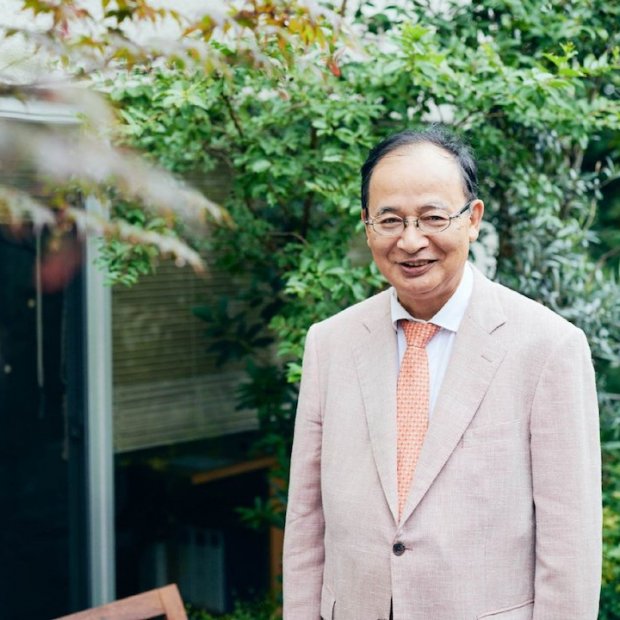
Profile
Fram Kitagawa
"Art from the Land" editor-in-chef / ETAT General Director
Born in 1946 in Takada-city (current Joetsu-city) in Niigata, Japan. Kitagawa has been General Director of ETAT to date since its preparation phase.
Articles
Latest Articles
Stay connected with the ETAT official social media to receive the latest news and event information, and the many seasonal faces of Echigo-Tsumari as well as new issue of the ETAT official media, “Art from the Land”.







